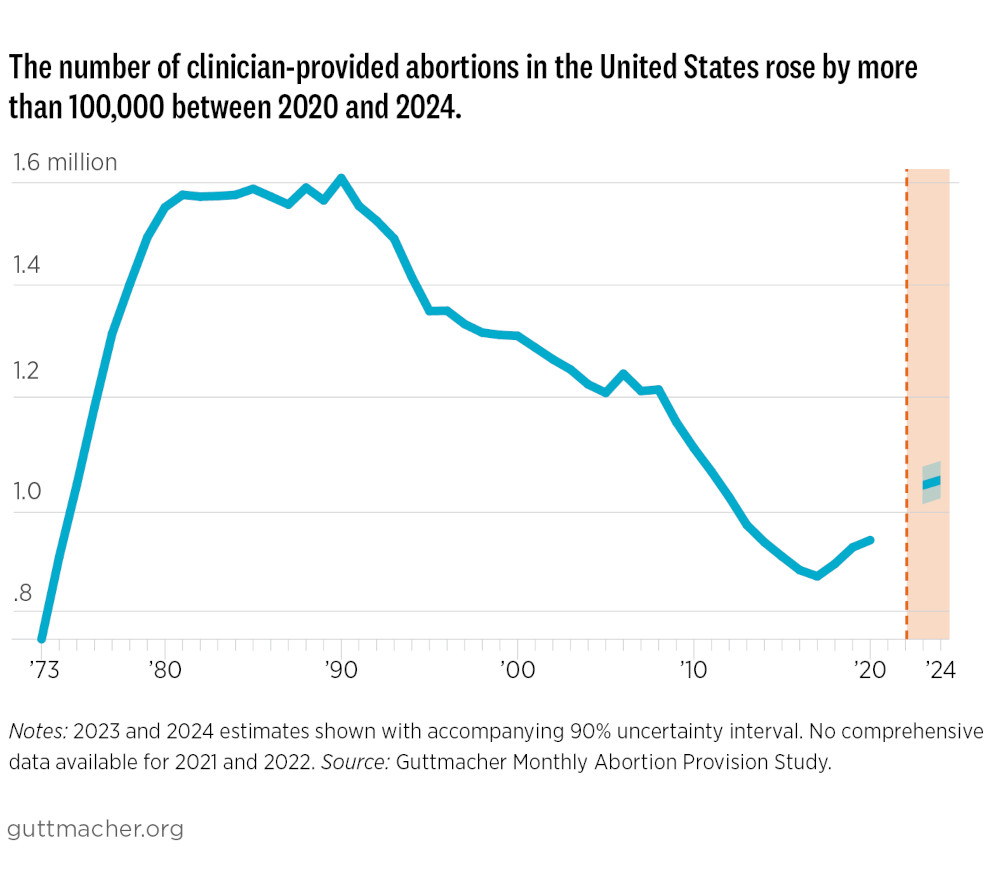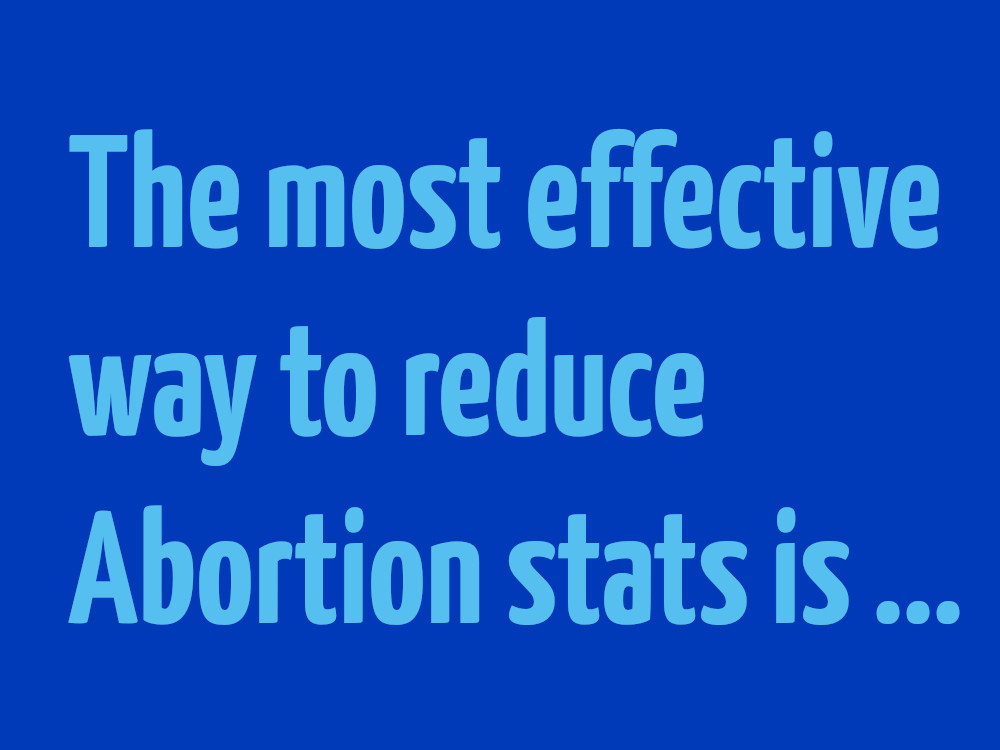OPINION Let’s put two scenarios together. two things that happened, one recently and one ongoing.
United States: The first is the well known – or should be well-known – fact that the numbers of abortions in the US increased since the Supreme Court removed the long-standing “right” to abortion
As the Court ruling in the Dobbs case in June 2023 overturned Roe v Wade and allowed states to effectively ban abortion or severely restrict it. This was a major victory for the abortion abolitionist movement, or so it was thought.
In March 2024, there were no clinics providing abortions in the 14 states with total abortion bans in effect at that time. These states had 63 clinics in 2020 according to the Guttmacher Institute, a specialist research body focused on abortion stats.
The numbers of abortions in the US went up. In fact, the Abortion rate turned around after decades of decline when President Trump was elected in 2016.

Abortion increased with the election of the most pro-life President in decades. An estimated 1,038,000 abortions were provided by clinicians in states without total bans in 2024, a less than 1% increase from 2023 and an increase of 12% from 2020, according to Guttmacher. This included Medical abortions provided through telemedicine by mail by US clinicians.
New South Wales: The second scenario is the failure of significant changes proposed by the Greens in the NSW parliament. The main provisions of the Abortion Law Reform Amendment (Health Care Access) Bill 2025 were removed. They would have taken away a conscientious objection provision that allows doctors to avoid making a formal referral of patients seeking a termination to an abortion provider, and would also have given the health minister the ability to require any hospital to provide abortions.
The legal think tank Freedom For Faith concluded that this removed threats to religious freedom from the new law.
Nurse Practitioners and Midwives will be allowed to prescribe abortion medication under the main provision that survived in the amended bill. This was passionately opposed by pro-life campaigners, including at fiery demonstrations against the original bill.
But the removal of the bill’s main provisions, on religious freedom concerns, meant that Parliament was listening, including to most of the heads of churches, who lobbied against the original bill.
Where to next for pro-lifers
The NSW result shows that religious voices are being heard – although our parliaments are unlikely to jump towards restricting abortions. The US pre-Trump might be the place to look.
Gutmacher research found that earlier state laws, which operated to restrict abortion in the Roe v Wade era, were not effective, but that access to contraception has an effect. Pre-Trump, Democratic administrations slowly increased the welfare net, and extended Medicare beyond people living with disabilities and older Americans.
Pro-life fits with a pro-family, pro-child policy mix. Concern about the abortion rate fits alongside concern about the birth rate – with the wish for the former to diminish and the latter to rise.
During the debate on the NSW Bill challenged to suggest policies this writer came up with equal pay, free child care and a mechanism to top up super for those affected by time out of the workforce, adding to a commenter suggestion of greater female equality, good sex education and the availability and affordability of long acting contraceptives.
It is not hard to see that many of those make the option of having children more attractive (to men as well as women).
More recently, the shortage of affordable housing, as documented by Anglicare, as also had an effect. The costs of childcare particularly affect low-paid families.
The pro-life campaign has suffered from being seen as a means to control the lives of others.
In the next phase, campaigning to increase the choices available to people to form and sustain family life, to have babies and look after them well, might bring the terms pro-life and pro-choice together.

